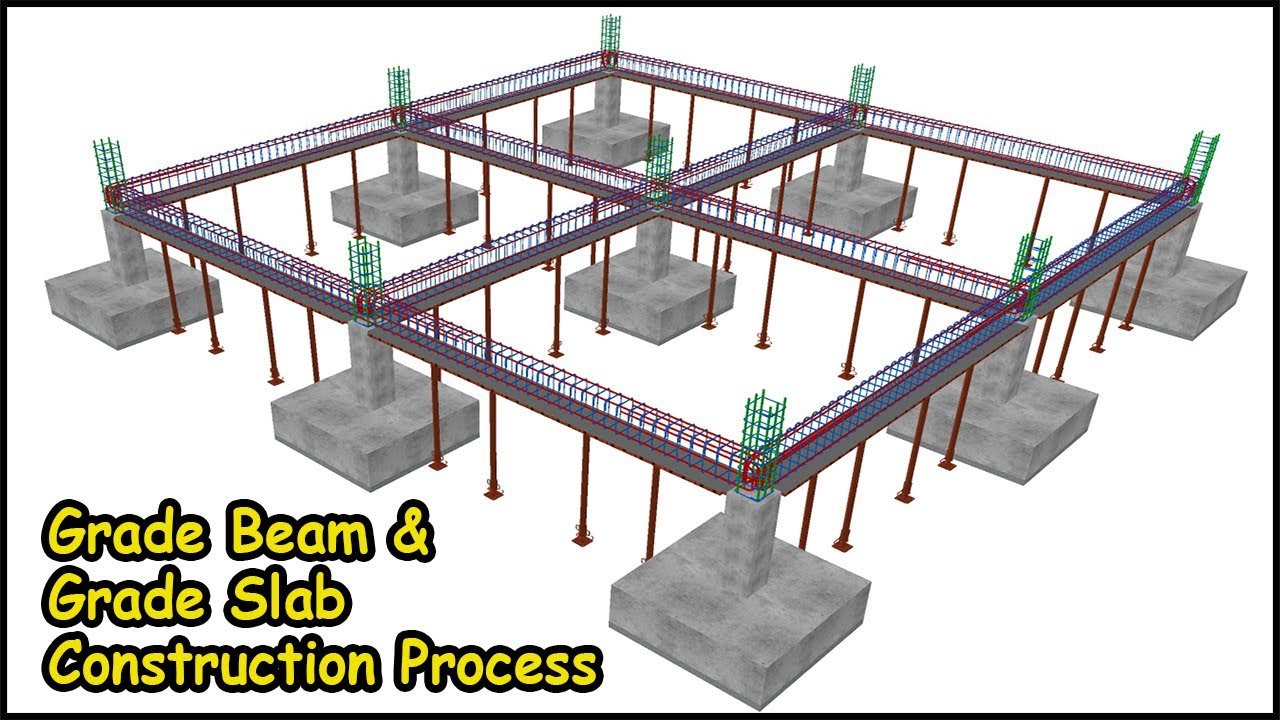Understanding Grade Beam Basics: What Is A Grade Beam?

A grade beam is a crucial structural element in construction projects. Acting as a support system, grade beams distribute the load of a building to the ground. They are often employed to provide stability and prevent settlement issues. Constructed from reinforced concrete, grade beams are commonly used in conjunction with deep foundations to ensure the structural integrity of a building. Now, let’s delve deeper into the role and significance of grade beams in construction.
The Basics of Grade Beams: Everything You Need to Know
What is a Grade Beam?
Welcome, young engineers and builders! Today, we are going to delve into the fascinating world of grade beams. Have you ever wondered what supports a building’s foundation or how structures stay sturdy? Well, grade beams play a crucial role in ensuring the stability and strength of buildings. Let’s explore together what grade beams are and why they are essential.
Understanding Foundations
Before we dive into grade beams, let’s talk about foundations. Imagine you are building a house. What do you think is the first thing that needs to be done? That’s right, laying a strong foundation. The foundation is like the legs of a building – it keeps everything standing tall and strong.
Role of Grade Beams in Foundations
Now, let’s focus on grade beams. Grade beams are horizontal structural elements that support the load of a building and transfer it to the ground. They are usually made of reinforced concrete and are designed to distribute the weight of the structure evenly. Grade beams run along the perimeter of a building’s foundation, providing additional support to the walls and columns above.
Types of Grade Beams
There are different types of grade beams used in construction, such as isolated grade beams and continuous grade beams. Isolated grade beams are standalone beams that support specific points of a structure, like columns. On the other hand, continuous grade beams run continuously under the entire perimeter of a building, providing uniform support.
Isolated Grade Beams
Isolated grade beams are like superheroes that swoop in to support the weight of columns or heavy loads. They are strategically placed under key points of the building where extra strength is needed. Imagine them as pillars holding up the structure.
Continuous Grade Beams
Continuous grade beams, on the other hand, are like a strong belt that wraps around the base of a building. They ensure that the weight of the structure is distributed evenly, preventing any areas from bearing too much load. Continuous grade beams offer comprehensive support along the entire foundation.
Construction Process
Building grade beams requires careful planning and precise execution. The process involves digging trenches along the foundation’s perimeter and then filling them with concrete. Steel reinforcement is often added to increase the beams’ strength and durability. Once the concrete sets, the grade beams provide a solid base for the rest of the structure.
Importance of Grade Beams
Grade beams are like the silent heroes of construction. They work tirelessly beneath the surface, supporting the weight of buildings and ensuring their stability. Without grade beams, structures would be vulnerable to shifting, settling, and even collapse. These beams play a vital role in keeping buildings safe and sound.
And there you have it, young builders – the lowdown on grade beams! From their role in foundations to the different types used in construction, grade beams are an essential part of building structures. Next time you see a building under construction, remember to think about the sturdy grade beams working hard beneath the surface to keep everything standing tall!
Grade Beam & Grade Slab Construction Process
Frequently Asked Questions
What is a grade beam?
A grade beam, also known as a reinforced concrete beam, is a structural element that is used to support loads and transfer them to the foundation soil. It is typically placed at or near ground level and serves as a horizontal member connecting columns or walls to distribute the load evenly.
How is a grade beam different from a traditional beam?
A grade beam differs from a traditional beam in its placement and purpose. While traditional beams are often used within the structure, grade beams are specifically designed to bear loads from exterior walls or columns and transfer them to the foundation. Grade beams are typically wider and deeper to distribute the load over a larger area.
When are grade beams used in construction?
Grade beams are commonly used in construction projects where the soil conditions are poor or when there is a need to support heavy exterior loads. They are often employed in buildings, bridges, retaining walls, and other structures where the foundation needs additional reinforcement to ensure stability.
What are the advantages of using grade beams in construction?
Using grade beams in construction provides several advantages, including increased strength and stability of the foundation, better load distribution, and the ability to accommodate uneven settlement of the structure. Grade beams also help reduce the risk of structural damage caused by soil movement or shifting.
Final Thoughts
A grade beam is a reinforced concrete beam that is used to support a structure’s foundation. It transfers the load from the structure to the ground, providing stability and strength. Grade beams are designed to distribute the weight of the building evenly, preventing uneven settlement. Understanding what a grade beam is crucial for ensuring the stability and longevity of any construction project.







